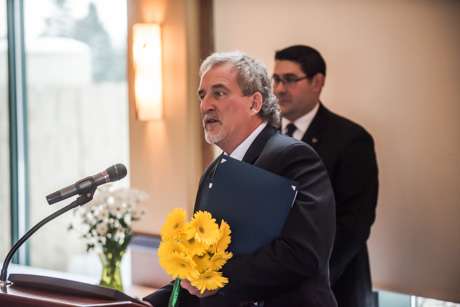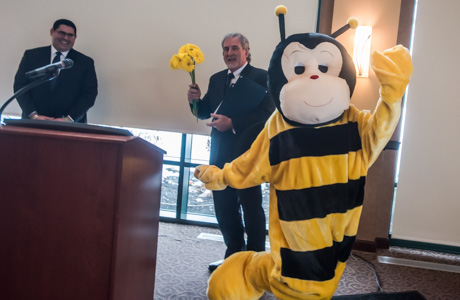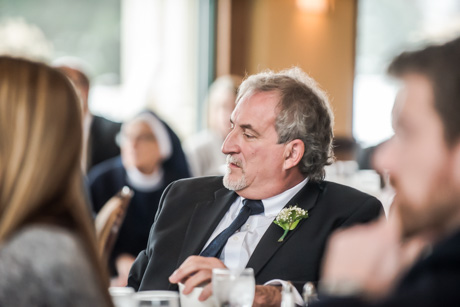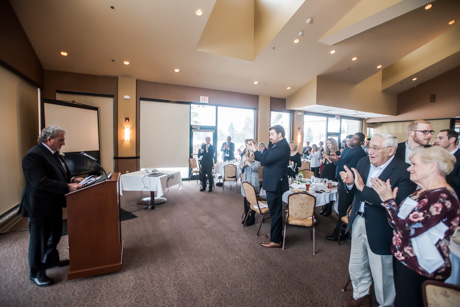Local orthopedic surgeon Matthew Landfried discusses the likelihood of Tiger Woods playing PGA golf again
Whether Tiger Woods can ever play competitive, PGA-level golf again depends on more than just his determination to recover from injuries he sustained Tuesday in a single-vehicle accident in Los Angeles, said Dr. Matthew Landfried, an orthopedic surgeon at United Memorial Medical Center.
Landfried spoke with members of the local media about the front-page news of the past couple of days involving the world's most famous golfer.
The 15-time winner of major tournaments lost control of the SUV he was driving and it crossed a median and veered through two lanes of traffic before hitting a curb, hitting a tree, and landing on its side in the brush, according to news reports.
Woods suffered multiple leg injuries. Landfried said based on what he's read of the injuries, Woods has a long, difficult recovery ahead of him.
"The amount of energy or force that causes the injuries creates additional problems with healing, excessive tissue damage, et cetera," Landfried said.
What concerns Landfried the most, when it comes to playing on the PGA tour, is the broken bones in the golfer's feet. Such injuries may make it impossible for Woods to walk -- as required by the PGA -- over 18 holes of golf on four consecutive days.
Then there are the compound fractures in his legs, which of themselves Woods may be able to overcome, but there are potentially two complications: whether the bones were broken at the ankle and knee joints (unknown) -- making rehabilitation more difficult -- and a procedure apprarently required in this case called a fasciotomy.
Landfried explains:
There are four (compartments) in the lower leg. Around those compartments is a sheath that's called fascia and it's actually very hard. I don't want to call it stiff, but it's unforgiving. It doesn't expand. So inside each compartment, most of them, there's a nerve and muscles and blood supply or blood vessels. When the muscles get injured that much, they bleed, they swell and they expand or want to expand beyond the ability of fascia to expand.
What starts to happen is you start cutting off blood supply, muscle starts to die and the nerves can be injured or killed. So you have to split that fascia. You have to take a knife and open that up from the top to the bottom. And when you do that, a muscle kind of comes oozing out and pours out, but it's taking the pressure off.
He added:
Because it is so swollen, you never close the fascia, but you can, most times close the skin, even in the leg. ... They probably did a two incision, for four compartments. So you got two large wounds from, you know, top of your leg to the bottom of the leg, wide open now. So those have to be treated with dressing or vacuum dressings, and infections are the biggest risk.
Finally:
The ability to heal because at that level of trauma is a second problem because what happens when the bone breaks that badly, it comes through the skin, the periosteum, which is a lining around the bone. I tell people it's like the sausage, the skin on a sausage, but it's around the bone that's been torn and stripped the blood supply to those areas that are broken, have been stripped and are gone. So, you know, as long as they reestablish, then you heal. If they don't reestablish, then you get what's called a delayed union or nonunion and sometimes it never heals.
So, all of those varabiles factor in Tiger's ability to not only fully recover but recover enough to hit the links again.
Woods hadn't been playing because he recently went through his fifth back surgery and was in recovery. Landfried said he hasn't seen any reports to indicate whether Woods reinjured his back in the accident but that could be another factor in his ability to play on the tour again.
At 45, Woods is just at the start of the age where most people find it more difficult, and it takes longer to recover from injuries. What may be in his favor is his athletically maintained body and his own willingness, well demonstrated over his career, to work hard. He will also have the advantage of physical therapists working with him every day.
"He's an incredible athlete," Landfried said. "He's working hard and he's going to have the best of the best. So as long as he can walk the 18 holes, he'll be back. But I just think it'll be some loss of power."





